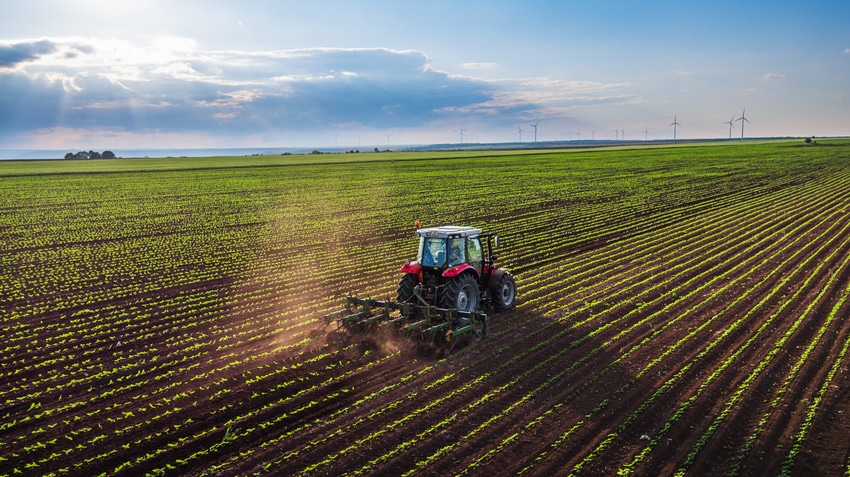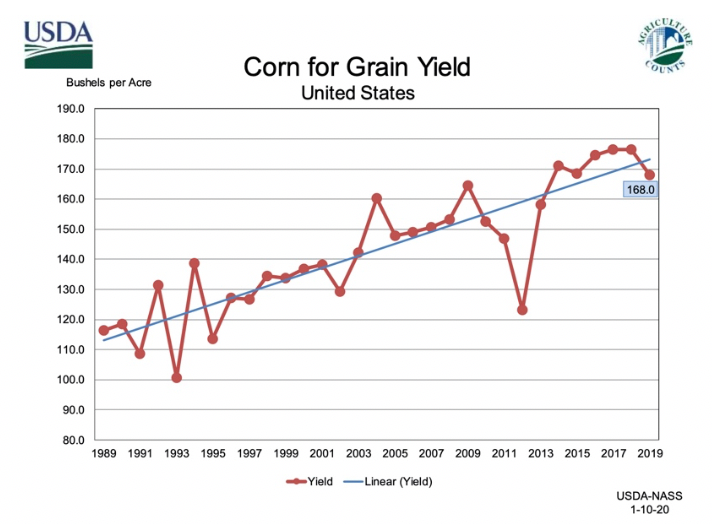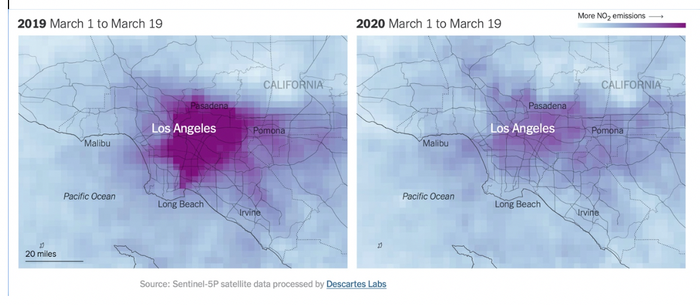
It may be difficult to stay focused with the surrounding pandemic consuming our attention. However, farmers still have a job to do as we count down the days toward the 2020 planting season.
Immediately following the March planting intention report, focus usually looks toward the weather forecast. With that in mind, I hosted an outlook webinar with atmospheric scientist Eric Snodgrass last week, focusing on how weather would affect this coming planting season.
Some regions are off to a rough start. Areas up and around North Dakota received 150% of their average snow levels by January 1st. The spring temperatures will be critical to getting the remaining corn harvested and ground prepared for next season.
The Southeast U.S. is experiencing the 4th highest storm volume ever from tornadoes and thunderstorms in Mississippi, Alabama, Georgia and Tennessee. This wet weather is expected to continue in these regions.
Conservation practices mitigate weather extremes
Someone from southwest Minnesota asked about the “frequent five- or six-inch rain deluges” they have been receiving. According to Snodgrass, the gulf stream has been “bulging” further north carrying billions of gallons of rain which slows their forward progression. That means it sits for longer periods of time over the same area. This is why we are seeing these increased rain deluges. Snodgrass does not see that changing anytime soon. Conservation practices should be implemented to offset the impact from these heavy rains.
Snodgrass does not see a repeat of last season’s weather-delayed planting season. In fact, he expects us to have a fairly moderate spring planting season.
If we can get into the field early, it will increase our chances of hitting our yield targets. That is why it makes sense that he forecasted an above trendline yield of 178.5 bpa.
In addition to the weather cooperation, I imagine many farmers have adjusted their planting strategy to avoid a repeat of last year. On our family farm we are going to utilize high-speed planting technology, which will allow us to plant at twice the speed or more. This further reinforces the likelihood of a seamless planting season.

Meanwhile in South America
Brazil has had some dry weather, primarily in the southern states of Parana and Rio Grande do Sul. This appears to have clipped the tail end of the soybean harvest in Brazil as the beans were in their critical pod-filling stage. It was too far out to determine if the dry weather will continue. However, the drought is happening in the south which does not have much second crop corn. There is no reason to believe it will affect the corn market in Brazil for the time being.
Less global pollution
One positive impact we have seen from COVID-19 is that pollution levels around the world have dropped dramatically in a short amount of time. As factories shut down in China and people drive less in the U.S., it has made an immediate impact to our environment. So much so, they are easily visible by satellite.

Climate activists have made claims that agriculture is to blame for CO2 emissions. All of this recent data puts a major hole in their theory. It’s a hole they can’t plug. Pollution levels are dropping despite the fact that cattle are still belching, and farmers are still gearing up for planting.
Agriculture has been made a scapegoat by those looking to sell plant-based burgers and spread misinformation. Furthermore, weather data shows a very strong correlation between our cropping season and CO2 emissions. During the winter, CO2 emissions rise, peaking during the spring before our crops help consume the carbon dioxide in the air, lowering emission rates until they bottom around harvest time.
You can watch the full Ag Weather Outlook here.
The opinions of the author are not necessarily those of Farm Futures or Farm Progress.
Futures trading involves risk. The risk of loss in trading futures and/or options is substantial and each investor and/or trader must consider whether this is a suitable investment. Past performance is not indicative of future results. Trading advice is based on information taken from trades and statistical services and other sources that CommStock Investments believes to be reliable. We do not guarantee that such information is accurate or complete and it should not be relied upon as such. Trading advice reflects our good faith judgment at a specific time and is subject to change without notice. There is no guarantee that the advice we give will result in profitable trades.
About the Author(s)
You May Also Like






